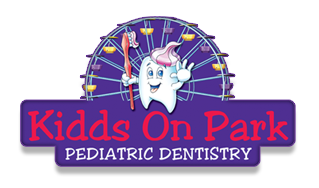Communicate A Positive Message
Your child’s attitude about dental visits begins with how you communicate with him or her about those visits. The AAPD (American Academy of Pediatric Dentistry) recommends that a child’s fist pediatric dental visit should occur at around one year of age. If you’re stressed about your child’s visit—perhaps because you get stressed about your own dental visits—your child will also exhibit stress. Maintaining positive associations with the dentist from the very first visit can prepare your child for a lifetime of strong relationships with a dental provider.
How Can You Prepare for Your Child’s First Visit?
Pediatric dental offices usually provide games, toys, and educational tools in a colorful, child-friendly environment. Pediatric dentists must receive extensive child psychology training, and their offices are designed as comfortable and encouraging environments that help prepare children for positive visits. The entire dental staff at pediatric dental practices provide supportive surroundings so children feel welcome during their visits.
For your child’s first pediatric dentist appointment, you can do the following to ensure a positive experience:
- Bring another adult. Infants can be fussy during examinations. An additional adult can soothe the infant while you ask questions and note the dentist’s advice.
- Leave other children at home. Other children can distract you and the infant, often resulting in additional fussiness. If possible, conducting the first visit without other children can reduce everyone’s stress levels.
- Avoid scary language. Words like “drills,” “needles,” “injections,” and “bleeding” can understandably frighten children. Pediatric dentists and staff are trained to avoid these kinds of triggering words.
- Provide positive explanations. Your own use of positive language in relation to your child’s dental care and dental visits can positively affect your child’s relationship with dental care providers. A broad explanation of the dentist’s role in “helping teeth stay healthy” can be much more effective than describing the dentist’s specific actions.
- Explain what is happening. Knowing what to expect can greatly reduce dentist-related anxiety in children. You can help your child manage expectations and make dental visits fun. These books for varying ages are both parent- and dentist-approved:
- The Berenstein Bears Visit the Dentist (Stan and Jan Berenstein)
- Show Me Your Smile: A Visit to the Dentist (Part of the “Dora the Explorer” series)
- Going to the Dentist (Anne Civardi)
- Elmo Visits the Dentist (Part of the “Sesame Street” series)
What Happens On a First Visit?
A child’s first dental visit has multiple goals:
The pediatric dentist and the child need to become well-acquainted. The dentist needs to evaluate the health of the existing teeth and gums. The dentist needs to assess tooth and jaw development to learn about the child’s overall health history. Finally, the dentist answers questions and advises parents about how to develop and carry out an appropriate oral care routine.
A Child’s First Visit in Ten Steps
- Dental staff members welcome the child and parent(s) or accompanying adult(s).
- Dental staff reviews questionnaires related to the child’s and family’s health histories.
- The pediatric dentist answers parent questions and addresses parent concerns.
- The pediatric dentist asks additional questions about the child’s overall wellness. Some questions are specific to oral habits, such as usage of pacifiers, and tooth alignment and development. Other questions are about broader topics such as the child’s diet and overall growth and development.
- The pediatric dentist provides advice about good oral care practices, sippy cup usage, fluoride intake, and ways to prevent oral injuries.
- The pediatric dentist begins examining the infant’s teeth. The ideal position is for the dentist and parent to face each other, with the infant’s head in the dentist’s lap. In this position, the infant can look at the parent while the dentist has unobstructed access to the infant’s mouth for examination.
- The pediatric dentist and dental staff members demonstrate good brushing and flossing.
- The pediatric dentist describes in detail the infant’s oral health status and makes specific recommendations about care. Often, these recommendations relate to diet and oral habits. Specific topics might include toothbrushes, toothpastes, and pacifiers that are orthodontically correct.
- The pediatric dentist informs the parent about which teeth might start coming in during the coming months.
- The pediatric dentist explains what happens at the next visit and sets an appropriate time for that exam.


